ARTIGO
Alimentação Com Leite Materno e Associação Com Probióticos para Prevenção de Enterocolite Necrosante: Uma Revisão Sistemática
Autores: Camila dos Santos Mancini<br />
Maíra Kassabian Oliveira<br />
Thaiany Brissi Benito
Palavras-chave: Enterocolite necrosante, prevenção, probióticos, leite humano, Necrotizing enterocolitis, prevention, probiotics, human milk
Resumo: Introdução: A enterocolite necrosante (ECN) é uma doença gastrointestinal inflamatória, que acomete principalmente recém-nascidos prematuros e de baixo peso ao nascer. A patogênese é multifatorial, mas geralmente inicia-se por uma hipóxia na mucosa intestinal, causando isquemia e necrose completado intestino. O quadro clínico inicial da ECN é variável e apresenta sintomas inespecíficos, levando ao reconhecimento tardio da doença. Nos estágios mais graves, a ECN manifesta-se por perfuração intestinal espontânea, coagulopatia intravascular disseminada, pneumoperitônio, sepse, morte, entre outros. O diagnóstico da ECN geralmente é feito por exames complementares, com achados de pneumatose intestinal, gás na veia porta, sinal da alça persistente e ascite. Dentre os fatores de risco conhecidos para desenvolvera doença, estão inclusos: imaturidade intestinal, prematuridade, desequilíbrio do tônus vascular, infecções, isquemia e escolha da estratégia alimentar do RN. Portanto, a prevenção à ECN pode ser realizada por estratégias de prevenção à prematuridade, administração de probióticos e priorização do leite materno. Objetivo: Analisar a efetividade dos métodos de prevenção de ECN em recém-nascidos, comparando a administração de probióticos com a alimentação com leite materno exclusivo. Métodos: Estudo do tipo revisão sistemática. A coleta de dados e interpretação foram efetuadas pela pesquisadora, individualmente, seguindo a metodologia Preferred Reporting Items for Systematic Reviews and Meta-Analyses (PRISMA).Foram incluídos estudos clínicos randomizados ou de coorte sobre prevenção de ECN, publicados entre 2012e 2022, a partir de pesquisa com descritores pré-definidos nos portais PubMed, Scientific Electronic LibraryOnline (SciELO), Literatura Latino-Americana e do Caribe em Ciências da Saúde (LILACS) e MEDLINE. Resultados: Foram selecionados 14 trabalhos dentre 186, todos incluíram RN prematuros e 6 não identificaram peso ao nascer. As amostras variam de n=90 a n=1310 participantes, e os produtos de probióticos mais utilizados continham Bifidobacterium spp., Lactobacillus spp. e Streptococcus spp. sozinhos ou combinados. Conclusão: A associação de probióticos ao leite materno ou de doadora é um método de prevenção efetivo de ECN. Porém o presente estudo contém limitações relacionadas à padronização da idade gestacional e ao peso ao nascer dos participantes, às espécies utilizadas nos probióticos, bem como aos fatores maternos que possam influenciar no desenvolvimento...
Título em Inglês: Breast Milk Feeding And Probiotic Association For The Prevention Of Necrotizing Enterocolitis: a Systematic Review
Resumo em Inglês: Introduction: Necrotizing enterocolitis (NEC) is an inflammatory gastrointestinal disease that primarily affects premature and low-birth-weight newborns. Its pathogenesis is multifactorial, often beginning with hypoxia in the intestinal mucosa, leading to ischemia and complete intestinal necrosis. The initial clinical presentation of NEC is variable and features nonspecific symptoms, resulting in delayed recognition of the disease. In severe stages, NEC may manifest as spontaneous intestinal perforation, disseminated intravascular coagulation, pneumoperitoneum, sepsis, and death, among other complications. The diagnosis of NEC is typically made through complementary exams, revealing intestinal pneumatosis, gas in the portal vein, persistent loop sign,and ascites. The risk factors for developing the disease include intestinal immaturity, prematurity, vasculartone imbalance, infections, ischemia, and the nutritional strategy chosen for the newborn. Therefore,prevention of NEC can be achieved through strategies at preventing prematurity, administering probiotics, and prioritizing human milk. Objective: To analyze the effectiveness of methods for preventing NEC innewborns, comparing the administration of probiotics with exclusive breastfeeding. Methods: This studyis a systematic review. Data collection and interpretation were conducted by the researcher individually,following the Preferred Reporting Items for Systematic Reviews and Meta-Analyses (PRISMA) methodology. Randomized clinical trials or cohort studies on NEC prevention published between 2012 and 2022 were included, based on searches with predefined descriptors in the PubMed, Scientific Electronic Library Online(Scielo), Latin American and Caribbean Health Sciences Literature (LILACS), and MEDLINE databases. Results: Fourteen studies were selected from 186, all of which included premature newborns, with 6 studiesnot reporting birth weight. Sample sizes ranged from n=90 to n=1310 participants, and the most usedprobiotic products contained Bifidobacterium spp., Lactobacillus spp., and Streptococcus spp., either alone or in combination. Conclusion: The combination of probiotics with human milk or donor milk is an effectivemethod for preventing NEC. However, this study has limitations related to the standardization of gestational age and birth weight of participants, the species used in probiotics, and maternal factors that may influence fetal development.
DOI: https://doi.org/10.63080/amhe.v3n2.p10-19
Acessar PDF do Artigo

